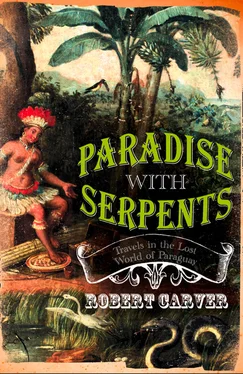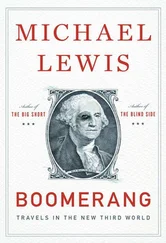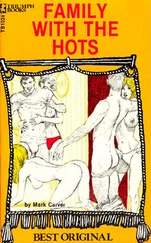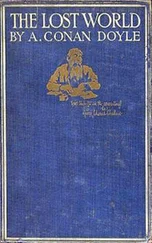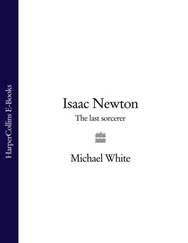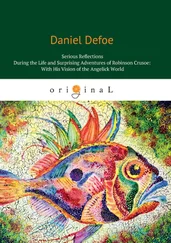I had spent a long time looking for a café that was open where I might be able to get a coffee and some breakfast, but the whole city was completely shut – not so much as a kiosk or corner store open. Later, the next day, in the newspaper Ultima Hora , I had seen a cartoon of a shivering Paraguayan family indoors trying to hide from view their smuggled TV set, fridge, freezer, hi-fi and so forth. Outside was a burglar wearing a black mask and carrying a swag bag, knocking on their door. ‘No thank you – we know who we are,’ the head of the household was saying. In Paraguay, as in Turkey, the censors actually entered every house and counted the people in every room, and noted down all the things they possessed. Each property had a sticker pasted on the outside door to prove they had been inspected. ‘Smuggling is the national industry of Paraguay,’ Graham Greene had observed, when he visited the country in the stronato , as the Stroessner years were called. ‘Contraband is the price of peace,’ Stroessner had stated, defining it as official policy. With the second lowest per capita income in South America, Paraguay imported more Scotch whisky than all the rest of South America put together. It was almost all immediately re-exported to neighbouring Brazil, Bolivia and Argentina. Paraguay was sometimes known as ‘the Switzerland of South America’ not because of its non-existent mountains or ski slopes, but because it was the regional haven for hot money, millionaires on the run, shady enterprises of all kinds, numbered bank accounts and smuggled luxury goods. As in Switzerland, there were a lot of cows and a lot of pastureland – but you didn’t make much of a living out of those. ‘Switzerland is where all the big criminals come together to hide the profits of their swindles and thefts,’ Juan Perón, dictator of Argentina had said in the 1950s, before being ousted. He should have known: he had sent Eva Perón across to Europe in 1947 to bank their own ill-gotten gains in Geneva. The bankers had put on a special celebratory dinner for her. The British government had refused her a visa and denied her entry as a harbourer of fugitive Nazis and handler of stolen Jewish gold. It was estimated by the Allied Enemy Property Bureau after the Second World War that the Nazis laundered 80% of the loot they had stolen from the Jews and the countries they occupied through Switzerland, with the full knowledge of the Swiss, and the remaining 20% through Argentina, Paraguay, Egypt and Syria, all sympathetic to the Nazi cause. It was the Swiss authorities who had suggested the Nazis add a ‘J’ on to the passports of German Jews before the war, so the Swiss could tell who they were and refuse them entry. ‘Few things have their beginnings in Switzerland,’ observed Scott Fitzgerald, ‘but many things have their endings there.’ Seedier, poorer, more evidently corrupt and oppressive, Paraguay was a downmarket latino, South American tropical version, more like Albania in ambience. Already in my strolls around the city centre I had seen the empty shells of many monumental steel and glass banks, their doors locked and shuttered, beggars sleeping on cardboard under their massive porticoes. Inside you could see the desks and tables covered in dust, with empty cartons on the floors from where the computers and office equipment had been taken away. Like desecrated cathedrals, I thought, these were modern temples of money that had failed, abandoned by their priests, acolytes and devotees, who now worshipped abroad, in Miami and the Cayman Islands.
The night before, although tired after my 18-hour journey from London, I had gone out into the city centre, curious and impatient to get some first impressions. The broken pavements, sandy soil spilling out, potholed streets and grime-stained walls suggested a city down on its luck, and slipping into dereliction. Closed shops, broken windows, beggars, dirt, unpainted walls, shutters falling off their hinges: no one had spent any money on this city for a long time. There were armed police everywhere, hanging around, and the 19th-century stucco buildings suggested a derelict Andalucian provincial town in Spain during the early years of General Franco, just after the Civil War. But the Indian women crouched on the pavements selling tropical fruit and vegetables, herbs, potions and unknown fruit drinks were from the New World, not the Old. I had been recommended the nearby Lido restaurant by the hotel clerk. Right opposite the Pantheon of Heroes, this was an atmospheric 1950s-style soda fountain, with pink granite counter top at which one sat, huge fans churning the air above one’s head. The place was run by capable, sensible Paraguayan women of a certain age, who wore pink uniforms with little pink caps. I ordered a veal escalope à la Milanese, with salad and bread, and a Pilsen beer. I had inwardly groaned when the waitress had appeared carrying the beer, and a bucket of ice with a glass inside it. Ice in beer is a favourite – and disastrous – tropical invention I had experienced in Malaysia and Indonesia. But I need not have worried. The glass rim had not touched the ice, and the bottle of beer was opened and thrust into the bucket in place of the glass, up to its neck in frosty coldness, as if champagne in an ice bucket. This was a hot country where they understood cold beer. I had last tasted an iced beer glass straight from the freezer in Australia, a country where they also understand the needs of thirsty, heat-choked men. The Paraguayan beer, brewed to a German lager recipe, was very cold and very good. The food was excellent too: the salad had a flavour completely unavailable in Europe today unless you grow your own vegetables without pesticides and fertilizers. Native pessimism led me to abstract about a third of the escalope and secrete it inside a paper napkin in my bag, together with a couple of slices of bread. I had a feeling there would be no food available on the morrow for any price. I was right, too. Together with an apple I had left over from my flight, and some boiled sweets, this was all I had to eat until the day after the census.
It was dark by 6pm. The night fell suddenly, like a curtain. Wood fires started up, pinpricks of light, from the shanty town on the sandbanks by the river. A breeze from the river wafted up the characteristic Third World smell of sweat, smoke, excrement and spices. By day I had been in Franco’s Spain, but by night it was Java or Malaysia. There were small children everywhere, ragged, energetic, vociferous and hungry. The Lido had two private armed guards in khaki uniform, one inside by the cash desk, the other outside by the door. The children begged for coins as the customers left. There was a charity box by the cash desk which bore the printed label: ‘Give generously for the lepers of Paraguay’. I just hoped none of them worked in the kitchens. In England, I had asked my local medical centre what diseases were on offer in Paraguay, and what injections were required. It’s hard to impress a British National Health doctor, but Paraguay did it for my GP. ‘I say … malaria, dengue fever, yellow fever, blackwater fever, cholera, typhoid, jiggers, tropical sores, dysentery, plague, HIV, sleeping sickness, bilharzia … by golly, they’ve got the lot out there … it’s a complete Royal Flush. Why are you going, if I might ask?’
I muttered something about work. ‘Oh, and the llamas all have syphilis, due to the lonely herdsmen taking advantage of them in the altiplano … ’ Surely not llamas, in Paraguay? I queried faintly. ‘Oh, sorry, my mistake, that’s Peru, next paragraph down. Oh and meningitis, leprosy, river fever, Lhasa fever … you know I think it’s easier to say what they haven’t got in jolly old Paraguay,’ he added jovially. ‘Ebola – they haven’t got that, it seems – yet.’ I’d had to go three times to his surgery for various shots over a couple of weeks. ‘Do please come back and see us again if … or I should say when you return,’ the doc had said cheerily. ‘The tropical medicine boys up in London like us to send up stool, blood and urine samples from people coming back from these sorts of places – you might pick up something really interesting, something new, even.’ Carver Fever, I thought, a hitherto unknown infection, carried by mosquitoes, incurable, causing paralysis, catalepsy, raging insanity, multiple organ failure and agonizing, lingering death by multiple spasm, also known as the Black Twitching Plague, after its gruesome effects. First brought back to Europe from tropical South America by the late travel writer Robert Carver, who was its first known victim, and whose body had to be cremated in an isolation hospital to avoid contaminating southern England … I could be famous: dead, and famous. I said I would stagger in on crutches, somehow, so he could apply his leeches to my depleted carcass. I thanked him, finally, after the last jab session, with thinly disguised insincerity and turned to go. ‘Oh, and I should take a plentiful supply of condoms – just in case any of those syphilitic llamas stray across the border … ha, ha, ha!’ His laughter echoed tinnily round the surgery. I gave him a weak smile, but I felt perhaps the joke lacked a certain good taste, or just simple fellow-feeling. On my first evening’s stroll in Asunción I was not particularly reassured to see a large sign with a vicious-looking mosquito on it in the Plaza Independencia, warning of dengue fever. ‘ No hay remedio ’ ran the Goyaesque rubric underneath – there’s no cure. Later, I was told that the dengue mosquito was slow and stupid and operated in Paraguay only by day, whereas the malarial mosquito was fast, intelligent and operated by night. The infectious dengue mosquito was male, the malarial female – make of that what you will. ‘Women are just as good as men, only better,’ observed D. H. Lawrence, who probably knew. The other Lawrence, T. E., contracted malaria while cycling in the south of France before the First War, while studying medieval castles. I had a great sack of anti-malarial and anti-every-other-damn-thing in my bags. If I had anything to say in the matter I was determined to avoid being immortalized in the medical history books.
Читать дальше
